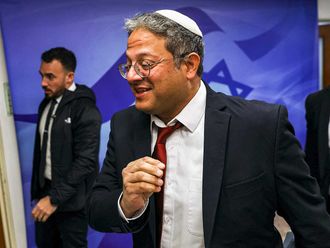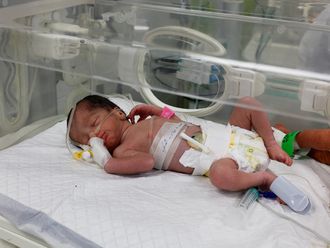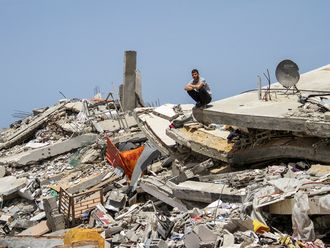
Damascus: As many as 80 people have been killed in the Idlib province in the month of Ramadan, according to the UK-based Syrian Observatory for Human Rights. An additional 70 have lost their lives since April 26, killed through booby traps, car bombs, roadside explosions, kidnapping, or targeted assassinations. Of the total 150, 37 are civilians, six children, 15 foreign fighters and 98 are Syrian members of the armed opposition writing each other off.
Lying in the Syrian northwest, the once sleepy town of Idlib has been under the control of Syrian rebels since mid-2015, notably Jabhat Al Nusra, the former Al Qaida branch in Syria now rebranded as Hayat Tahrir Al Sham (HTS).
Since entering the battlefield that September, the Russians have been periodically sending busloads of opposition figures to Idlib, namely those who refused to join the reconciliation process in western Aleppo and the countryside of Homs, Hama, and more recently, Damascus.
Many came with their light arms, families, and vengeance in their eyes, having been uprooted from their family homes, with no indication on when — if ever — they would be returning. Given the nearly full exodus of the city’s traditional nobility and inhabitants, it has become a breeding ground for newcomers, both Syrians and foreigners, mostly veterans of previous battlefields.
The ultimate objective, it seemed, was to loop all militants into one geographic area, and then to have it sealed off by the Russian Army. Once quarantined from the rest of the country, the Russians aimed at greatly encouraging inter-rebel fighting in Idlib — or not lifting a finger to stop it, hoping that the militants would eventually kill each other.
That is exactly what has been happening for two years now, especially after HTS overpowered all other terrorist groups in Idlib. Russian media has been focusing on Idlib as a prototype for how a Syrian city would look like once fully out of government control, sometimes describing it as a “Syrian Kandahar”.
It is unclear what the endgame for Idlib will be. In mid-February, backed by the Russian Air Force, Syrian troops marched on Idlib, pledging to retake the city in full and expel 13 Turkish military checkpoints. The Turks had originally pinned high hopes on Idlib, due to its proximity to the Turkish border, demanding that they get to police and administer it, as part of the Astana Process.
Damascus was and remains furious with Turkish presence, saying that this is an illegal occupation, but so far, the Russians have been silent about Turkish presence in Idlib, just like they did not stop them from overrunning border cities like Jarablus and Azaz back in 2016, or Afrin — west of the Euphrates — last February.
After finishing off the Damascus countryside, the Syrian Army now hopes to retake Idlib through a negotiated agreement, sponsored by the Russians, rather than a military confrontation.
“For many years, Idlib was nothing but a neglected rural city, but it has now become eye of the Syrian conflict,” says Anouar Imran, a Sweden-based Syrian dissident and poet.
“Clearly, the powers controlling different Syrian players have settled for keeping Idlib under full Turkish guardianship. The Turks have been watching the militant groups gathered in Idlib settling old scores with one another. It is the civilian residents of Idlib, those shipped there from different cities, who paid the high price for this inter-fighting and continue to do so. Idlib is now like a ship that is preemptively filled with people who have drowned already. All it needs is a slight wind, no matter how feeble, to be publicly declared dead.”












